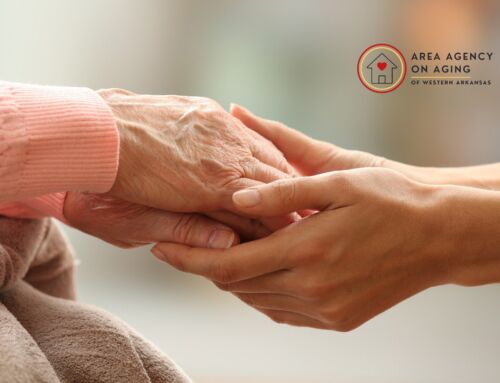Caring for a loved one is one of the most meaningful responsibilities a person can take on. But along with deep purpose comes heavy demands. Long hours, emotional strain, and the constant pressure to be available can quickly drain even the most dedicated caregiver. However, caregiver burnout resources are available. Burnout does not arrive all at once—it builds slowly, sometimes so gradually that it goes unnoticed until health and relationships are at risk.
This guide explores the warning signs of caregiver stress, the stages of burnout, and the practical steps that can restore balance. With the right tools, caregivers can care for others without losing sight of their well-being.
Key Takeaways
- Early signs of burnout include fatigue, sadness, irritability, disrupted sleep or appetite, mood shifts, and loss of joy.
- Stages of burnout progress from hopeful fatigue to feelings of entrapment, and finally to numbness and resentment.
- Compassion fatigue is distinct from burnout and stems from emotional overload and prolonged grief.
- Self-assessment tools from the AMA and NCOA can help caregivers evaluate stress levels.
- Daily stress relief practices—such as breathing exercises, movement, journaling, and routines—support resilience.
- Mental health impacts may include identity loss, detachment, or guilt, all of which require professional attention.
- Recovery strategies include therapy, breaks, support groups, and, in some cases, medication.
- Trusted resources include AARP, Medicare, Eldercare Locator, and caregiver hotlines.
- Self-care essentials—nutrition, sleep, movement, boundaries, and accepting help—are vital to sustainability.
- Resilience-building habits allow caregivers to set limits, share responsibilities, and reconnect with themselves.

Early Warning Signs of Caregiver Burnout
Caregiving always involves a degree of fatigue, but exhaustion that lingers or worsens may be a red flag. Burnout often begins with subtle physical and emotional changes:
- Physical symptoms: headaches, muscle tension, frequent illness, and disrupted sleep.
- Emotional symptoms: sadness, irritability, helplessness, or frequent tearfulness.
- Behavioral changes: snapping at loved ones, losing appetite, or withdrawing from social interaction.
Perhaps the most telling sign is the fading of joy. Activities that once brought fulfillment may feel empty or burdensome. Care may continue out of obligation rather than compassion. Left unaddressed, this emotional depletion can intensify into deeper burnout.
Caregiver Burnout: The Three Stages
Burnout rarely appears overnight. Instead, it progresses in stages:
- Stage One: Hopeful but tired
Caregivers remain committed, enthusiastic, and willing to give. Fatigue is noticeable but not overwhelming. - Stage Two: Trapped and exhausted
Care begins to feel isolating. Even with outside support, caregivers may feel alone in their responsibility. Sleep suffers, irritability increases, and private doubts surface: “I can’t keep this up.” - Stage Three: Numbness and resentment
Emotional detachment takes hold. Feelings of resentment toward the care recipient may surface, often followed by guilt. This stage requires immediate intervention and professional support.
Caregiver Burnout Resources: Compassion Fatigue vs. Burnout
While often confused, compassion fatigue is not the same as burnout. Burnout stems from chronic overwork and exhaustion. Compassion fatigue, on the other hand, results from prolonged emotional overload—absorbing another person’s suffering to the point of feeling empty or emotionally detached.
Unlike burnout, compassion fatigue can appear suddenly and may leave caregivers feeling joyless, indifferent, or emotionally numb, even when thanked or supported. Many caregivers experience both conditions at the same time, making it critical to recognize and address them early.
Click here to explore the Family Caregiver Alliance.
Evaluating Stress Levels
Recognizing stress is the first step toward preventing burnout. Fortunately, several validated tools exist:
- The Caregiver Self-Assessment Questionnaire (American Medical Association) helps caregivers identify signs of emotional and physical stress.
- Stress Check-Ups from the National Council on Aging provide a deeper look at how stress impacts health.
Using self-assessment tools regularly—monthly, if possible—offers insight into changes over time. Printable versions are especially useful for sharing results with doctors, counselors, or family members.
Scores that indicate high stress should never be ignored. Reaching out to a healthcare provider or counselor ensures that help is accessed before health declines further.
Caregiver Burnout Resources: Daily Stress Management Strategies
Small, consistent habits often have the greatest impact on caregiver well-being.
- Breathing exercises: Slow, rhythmic breathing calms the nervous system. A simple 4-4-4 rhythm (inhale, hold, exhale) can be practiced anywhere.
- Movement: Stretching, walking, or light exercise reduces stress hormones and improves sleep quality.
- Journaling: Writing down tasks and emotions provides a safe outlet and prevents feelings from building up internally.
- Routine building: Consistent meal, sleep, and activity times create stability for both caregiver and care recipient.
Support groups, whether local or online, also provide an outlet for frustration, encouragement, and shared strategies. Even five quiet minutes of daily solitude without screens can make a difference in restoring perspective.
Visit the Caregiver Services page for more information on resources and support.
Mental Health and Identity in Caregiving
Caregiving not only reshapes daily schedules but also deeply impacts personal identity. Initially, many caregivers feel pride and purpose in their role. Over time, however, responsibilities can overshadow other aspects of life, leaving individuals feeling defined only as “the caregiver.”
This loss of identity can lead to sadness, anger, or apathy. Emotional detachment—marked by coldness, numbness, or frequent outbursts—signals that stress has reached unsafe levels. At this point, caregiving may compromise both caregiver and recipient well-being.
Establishing boundaries, seeking counseling, and maintaining activities unrelated to caregiving can restore balance. Caregivers are more than their role, and reclaiming that truth is vital for long-term resilience.
Recovery and Resilience
Recovery from burnout requires time and deliberate action. Strategies include:
- Therapy or counseling to process emotions and regain perspective.
- Scheduled breaks to allow physical and emotional rest.
- Support networks through family, friends, or caregiver groups.
- Medical support, including medication if recommended by a physician.
Building resilience means adopting preventive measures: creating boundaries, sharing responsibilities, practicing daily self-care, and reconnecting with personal goals or hobbies. Over time, these habits transform caregiving from a source of depletion to one of sustainable compassion.
Where to Find Help and Caregiver Burnout Resources
No caregiver should face burnout alone. Numerous organizations provide education, tools, and direct support:
- AARP Caregiver Resources
- Medicare Caregiver Support
- Administration for Community Living (ACL)
- Eldercare Locator (1-800-677-1116)
- Caregiver Action Network
- National Alliance for Caregiving
- Faith-based and community support groups
Hotlines, local agencies, and online forums can provide immediate guidance for those who feel overwhelmed or unsafe.
Visit our website and review our list of Caregiver Services.
Caregiver Burnout Resources from Area Agency on Aging of Western Arkansas
Caregiving is both a gift and a challenge. Without safeguards, it can drain health, joy, and identity. Recognizing the early signs of burnout, using self-assessment tools, and building daily habits of rest and renewal are crucial steps to sustaining care.
Above all, caregivers must remember this truth: supporting someone else requires first supporting oneself. By seeking help, setting boundaries, and nurturing resilience, caregiving can remain an act of love rather than a source of despair. Contact us today to learn more about how we can support you.


